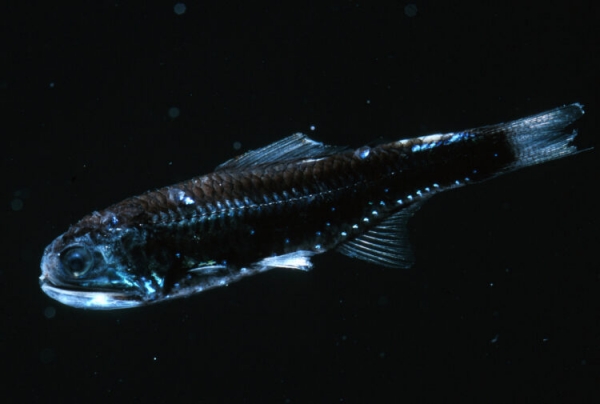The deep sea contains more than 90% of the water in our oceans, but only about a third of all fish species. Scientists have long thought the explanation for this was intuitive — shallow ocean waters are warm and full of resources, making them a prime location for new species to evolve and thrive. But a new University of Washington study led by Elizabeth Miller reports that throughout Earth’s ancient history, there were several periods of time when many fish actually favored the cold, dark, barren waters of the deep sea.
“It’s easy to look at shallow habitats like coral reefs, which are very diverse and exciting, and assume that they’ve always been that way,” said Miller, who completed the study as a postdoctoral researcher in the UW School of Aquatic and Fishery Sciences and is now a postdoctoral fellow at the University of Oklahoma. “These results really challenge that assumption, and help us understand how fish species have adapted to major changes to the climate.”
The deep sea is typically defined as anything below about 650 feet, the depth at which there is no longer enough sunlight for photosynthesis to occur. That means there is far less food and warmth than in the shallows, making it a difficult place to live. But by analyzing the relationships of fish using their genetic records going back 200 million years, Miller was able to identify a surprising evolutionary pattern: the speciation rates — that is, how quickly new species evolved — flip-flopped over time. There were periods lasting tens of millions of years when new species were evolving faster in the deep sea than in more shallow areas.
In some ways, this discovery raised more questions than it answered. What was causing fish to prefer one habitat over another? What made some fish able to move into the deep sea more easily than others? And how did these ancient shifts help create the diversity of species we have today?
Read more at University of Washington
Image: A lanternfish, which is a deep-water fish that gets its name from its ability to produce light.(Credit: Steven Haddock/Monterey Bay Aquarium Research Institute)


